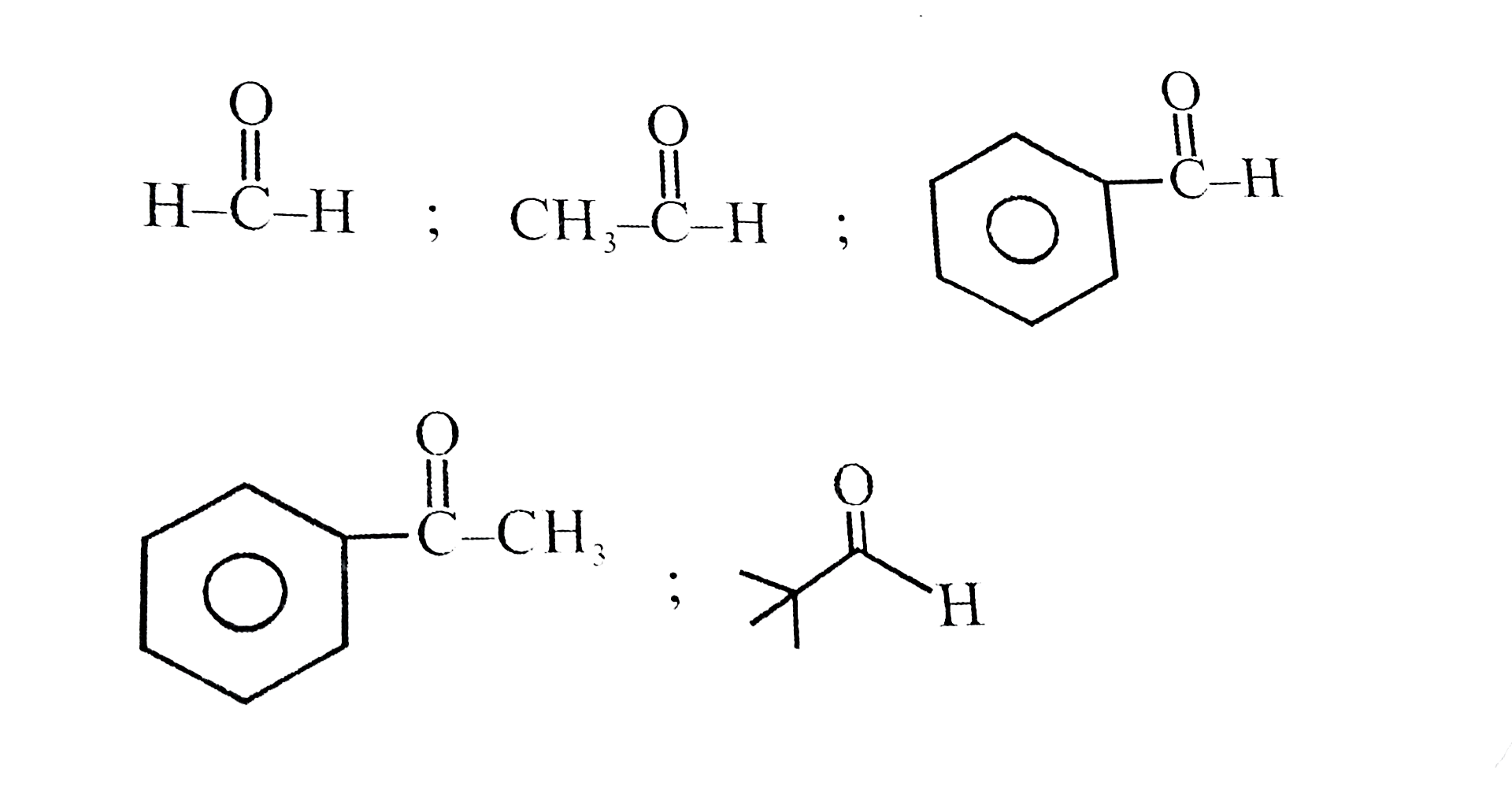A : 2-methyl propanal can give Cannizzaro reaction as well as aldol condensation.
R : It has α-hydrogen atom.
If both Assertion & Reason are true and the reason is the correct explanation of the assertion, then mark (1).
If both Assertion & Reason are true but the reason is not the correct explanation of the assertion, then mark (2).
If Assertion is false statement but Reason is true, then mark (3).
If both Assertion and Reason are false statements, then mark (4).
The correct Answer is:B
To solve the question, we need to analyze the assertion and reason provided:
Assertion (A): 2-methylpropanal can give Cannizzaro reaction as well as aldol condensation.
Reason (R): It has alpha-hydrogen atom.
Step 1: Understanding the Cannizzaro Reaction
The Cannizzaro reaction occurs with aldehydes that do not have alpha-hydrogen atoms. In this reaction, one molecule of the aldehyde is oxidized to a carboxylic acid, while another molecule is reduced to an alcohol.
Step 2: Identifying the Structure of 2-Methylpropanal
2-Methylpropanal (also known as isobutyraldehyde) has the following structure:
- CH3-CH(CH3)-CH2-CHO
In this structure, we can identify the alpha-carbon (the carbon adjacent to the carbonyl group) and the alpha-hydrogens.
Step 3: Checking for Alpha-Hydrogens
In 2-methylpropanal:
- The alpha-carbon is the carbon attached to the carbonyl (CHO).
- The alpha-hydrogens are the hydrogens attached to the alpha-carbon.
Since 2-methylpropanal has an alpha-carbon with attached hydrogens, it has alpha-hydrogens.
Step 4: Aldol Condensation
Aldol condensation occurs when aldehydes (or ketones) with alpha-hydrogens undergo a reaction in which they form a β-hydroxy aldehyde (or ketone) upon reaction with themselves or another carbonyl compound. Since 2-methylpropanal has alpha-hydrogens, it can undergo aldol condensation.
Step 5: Conclusion
- Assertion (A) is false because 2-methylpropanal cannot undergo the Cannizzaro reaction (it has alpha-hydrogens).
- Reason (R) is true because 2-methylpropanal does have alpha-hydrogens.
Thus, the correct answer is that the assertion is false, and the reason is true.
Final Answer
The assertion is false, and the reason is true. Therefore, the correct option is that the assertion is false while the reason is true.
---
Reason (R): It has alpha-hydrogen atom.
The Cannizzaro reaction occurs with aldehydes that do not have alpha-hydrogen atoms. In this reaction, one molecule of the aldehyde is oxidized to a carboxylic acid, while another molecule is reduced to an alcohol.
2-Methylpropanal (also known as isobutyraldehyde) has the following structure:
- CH3-CH(CH3)-CH2-CHO
In 2-methylpropanal:
- The alpha-carbon is the carbon attached to the carbonyl (CHO).
- The alpha-hydrogens are the hydrogens attached to the alpha-carbon.
Aldol condensation occurs when aldehydes (or ketones) with alpha-hydrogens undergo a reaction in which they form a β-hydroxy aldehyde (or ketone) upon reaction with themselves or another carbonyl compound. Since 2-methylpropanal has alpha-hydrogens, it can undergo aldol condensation.
- Assertion (A) is false because 2-methylpropanal cannot undergo the Cannizzaro reaction (it has alpha-hydrogens).
- Reason (R) is true because 2-methylpropanal does have alpha-hydrogens.
The assertion is false, and the reason is true. Therefore, the correct option is that the assertion is false while the reason is true.
Similar Questions
How many compounds gives Cannizzaro reaction and aldol condensation respectively

View SolutionA : Ethanal undergoes aldol condensation.
R : Ethanal has four α-H atoms.
View SolutionA compound A with molecular formula C15H13Cl gives a white precipitate on adding silver nitrate solution A on reacting with alcoholic KOH gives compound B as the main product. B on ozonolysis gives C and C gives Cannizaro reaction but not aldol condensation. D gives aldol condensation but not Cannizaro react A is :
View SolutionA : Formaldehyde undergoes Cannizzaro reaction in the presence of H+.
R : Formaldehyde has two α-Hydrogen atoms.
View SolutionFormaldehyde undergoes Cannizzaro's reaction since it has one alpha hydrogen atom.
View SolutionFormaldehyde undergoes Cannizzaro's reaction since it has one alpha hydrogen atom.
View SolutionHow will you account for the following:
Formaldehyde gives Cannizzaro's reaction but acetaldehyde does not.
View SolutionWhy does formaldehyde undergo Cannizzaro's reaction while acetaldehyde gives aldol condensation?
View SolutionDescribe the following
i. Acetylation
ii. Cannizzaro reaction
iii. Cross aldol condensation
iv. Decarboxylation
View SolutionDescribe the following
i. Acetylation
ii. Cannizzaro reaction
iii. Cross aldol condensation
iv. Decarboxylation
View Solution
